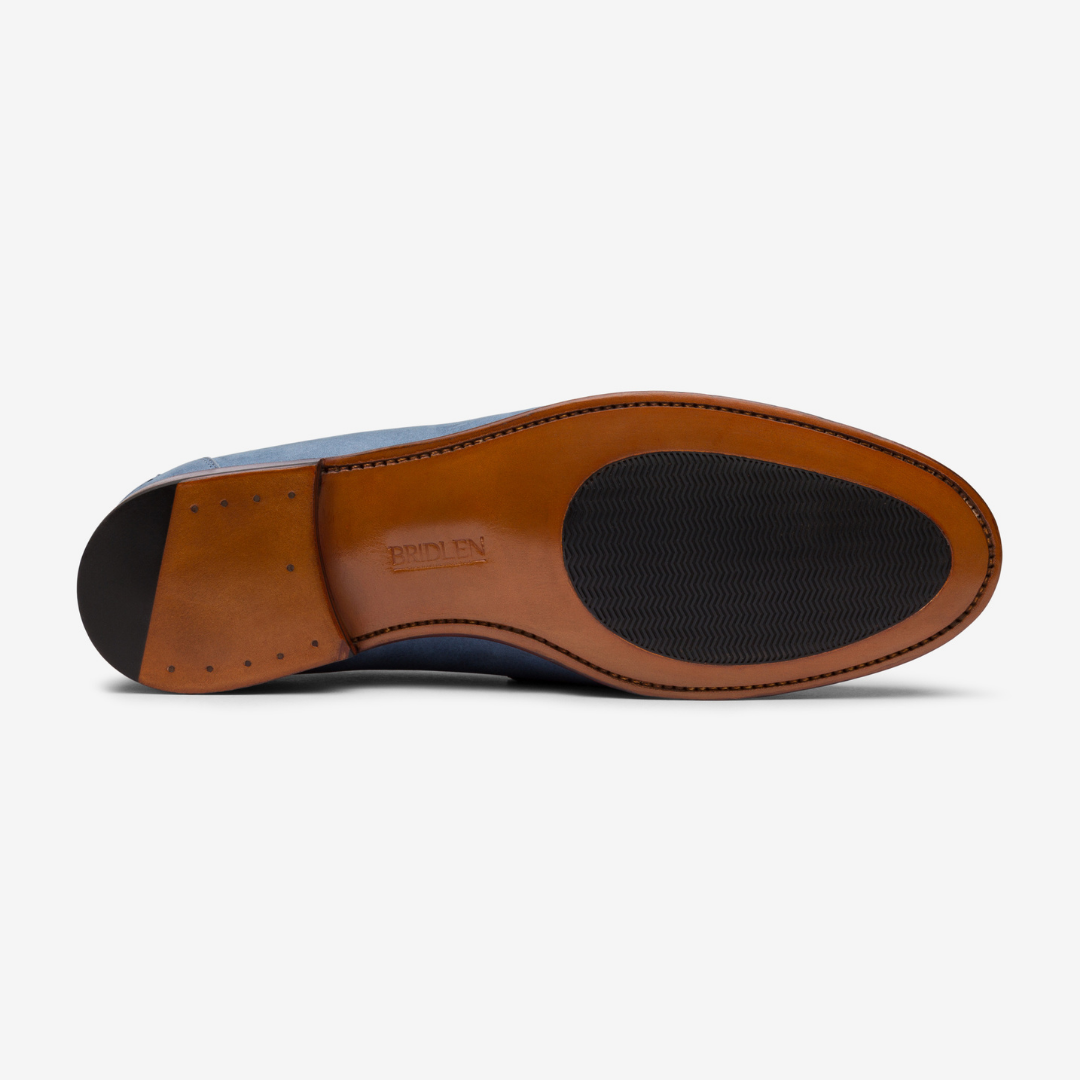
Slow pit tanned leather bends
Pit tanning takes 8 - 12 months to make, sometimes even more, depending on the thickness of the leather. The hides go through a natural dyeing and tanning process using vegetable extracts and tannins, from the bark of an oak tree, chestnut, mimosa , quebracho and other ingredients. Since heat is not used in the process, the natural steeping process over many different pits takes time and decades of experience to perfect. The end result is a tough, yet flexible sole, resistant to abrasion and naturally water resistant. We use the best from JR Rendenbach in Germany, J & F.J. Baker in England and a Tuscan tannery in Italy.

Leather injected with rubber
Instead of a separate piece of leather on the forepart attached for extra grip, the leather sole is cut in the centre and liquid rubber is injected to fill the cavity. When it cools down, the rubber and leather become one unit, making it more robust and removing any risk of separation during wear.

Rubber soles
The city and button soles made of nitrile rubber have excellent grip and abrasion resistance, superior oil resistance and good tear strength. The lugged rubber soled used only on the boots, uses a slightly different compound of rubber to give it some more flexibility. All our rubber soles are built to last for a long time.

EVA
Soles made of Ethylene-Vinyl Acetate are lighter and flexible compared to rubber soles. Abrasion resistance and longevity is lesser, but they are well suited for a casual look. All our EVA soles are cemented to a leather midsole, so it will be easy to resole with another pair of EVA soles without affecting the integrity and other materials of the shoe.
